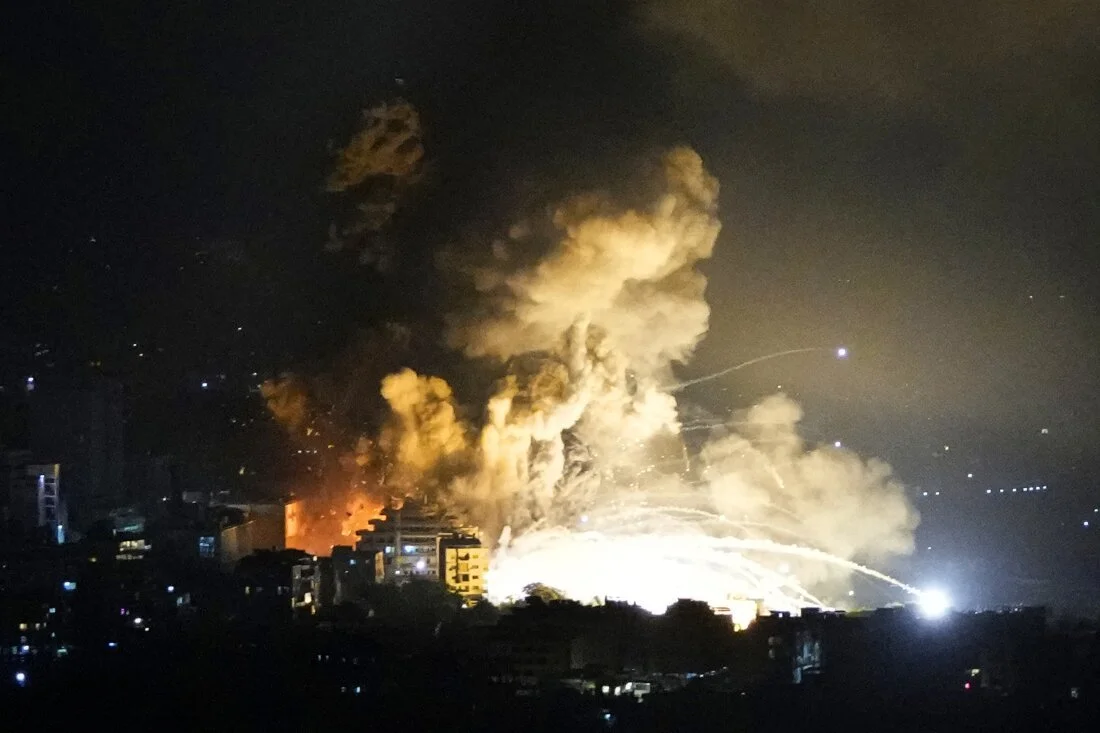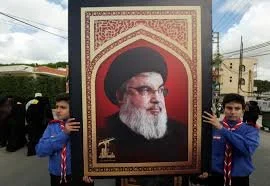Hezbollah confirms its chief is martyred, vows to continue battle
Top Hezbollah and IRGC leaders also slain in Israeli attack
Photo: AP
THE Hezbollah group of Lebanon has confirmed that its veteran leader Sayyed Hassan Nasrallah has been martyred in an air strike but has vowed to continue its battle against Israel.
The Jewish state said it had killed the Hezbollah leader in an air strike in Beirut’s southern suburbs a day earlier, in what would be a devastating blow to the group as it reels from an escalating campaign of Israeli attacks.
According to an international news agency, Nasrallah’s death marks a major blow not only to Hezbollah but also to its alleged backers in Iran. He was a leading figure in the Tehran-backed Axis of Resistance that seeks to protect Palestinian and Lebanese people from Israeli atrocities.
Iran, which arms and finances Hezbollah, said a senior member of its Revolutionary Guard Corps was killed in the same strike. IRNA news agency reported General Abbas Nilforoushan, deputy commander of the Guards’ operations, died in the strike that also left the Hezbollah chief dead.
“Sayyed Hassan Nasrallah, Secretary General of Hezbollah, has joined his great, immortal martyr comrades whom he led for about 30 years,” the Lebanese group said in a statement.
It said he was killed with other group members “following the treacherous Zionist strike on the southern suburbs” of Beirut.
Photo: Reuters
AFP journalists heard a passer-by scream “Oh my God!”, and women weeping in the streets after Hezbollah announced the news.
Hezbollah said it would continue its battle against Israel “in support of Gaza and Palestine, and in defence of Lebanon and its steadfast and honourable people”.
It did not say how Nasrallah was killed.
Hezbollah’s Al-Manar TV began airing verses from the Holy Quran after his death was announced.
The Israeli military said in a statement that Nasrallah was eliminated in a “targeted strike” on the group’s underground headquarters under a residential building in Dahiyeh — a Hezbollah-controlled southern suburb of Beirut.
It said he was killed along with another top Hezbollah leader — Ali Karaki — and other commanders.
“The strike was conducted while Hezbollah’s senior chain of command were operating from the headquarters and advancing terrorist activities against the citizens of the State of Israel,” it claimed.
Late on Friday, a source close to Hezbollah told Reuters that Nasrallah was not reachable.
In Tehran, posters of Nasrallah were erected bearing the slogan “Hezbollah is alive”. Iran’s foreign ministry spokesman Nasser Kanani posted on X that Nasrallah’s “sacred goal will be realised in the liberation of Quds (Jerusalem), God willing”.
Earlier, Iran’s supreme leader Ayatollah Ali Khamenei condemned what he called Israel’s “short-sighted and stupid policy”, without referring to Nasrallah’s fate.
Israel’s five hours of continuous strikes on Beirut early on Saturday followed Friday’s attack, by far the most powerful by Israel on the city during the conflict with Hezbollah that has played out in parallel to the Gaza conflict for nearly a year.
Reuters journalists heard more than 20 air strikes in Beirut before dawn on Saturday and more after sunrise. Smoke could be seen rising over the city’s Hezbollah-controlled southern suburbs, known as the Dahiyeh.
Friday’s airstrike on Dahiyeh shook Beirut. A security source in Lebanon said the attack — a quick succession of massively powerful blasts — had left a crater at least 20 meters deep.
Thousands of people have fled the area since Friday’s attack, congregating in squares, parks and sidewalks in downtown Beirut and seaside areas.
“They want to destroy Dahiyeh, they want to destroy all of us,” said Sari, a man in his 30s who gave only his first name, referring to the suburb he had fled after an Israeli evacuation order.

